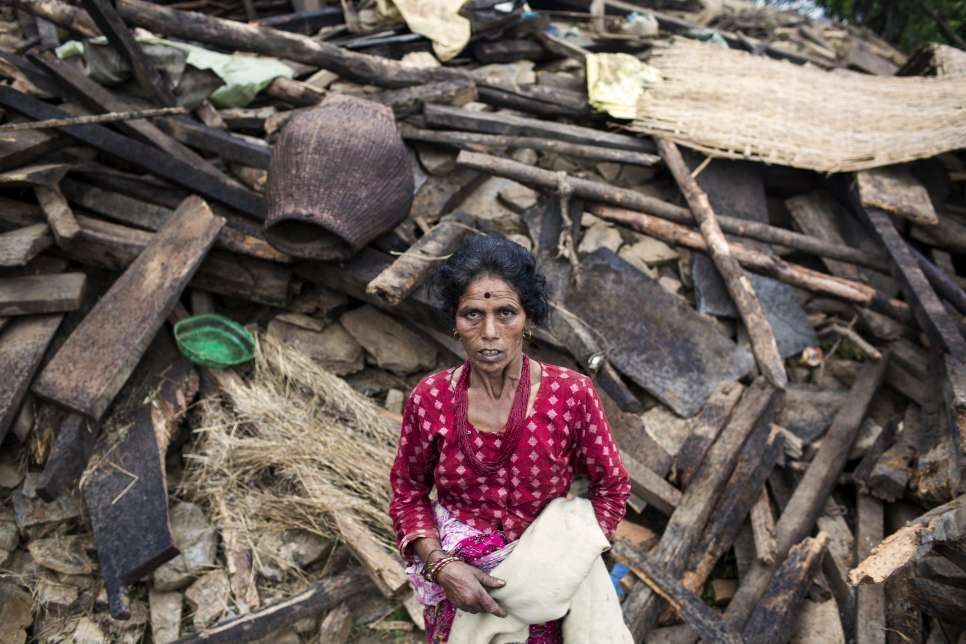Climate Change and Disasters
People try to adapt to this situation, but for many this will mean a conscious move to another place to survive. Such moves, or the effects of climate change on natural resources, may spark conflict with other communities, as an increasing number of people compete for a decreasing amount of resources.
In addition to protecting populations displaced by disasters and the changing environment, we work to increase the resilience of people who are particularly vulnerable to the effects of climate change.
In photos: Climate change, disasters and displacement
01 January 2015
Since 2009, an estimated one person every second has been displaced by a disaster, with an average of 22.5 million people displaced by climate- or weather-related events since 2008 (IDMC 2015). Disasters and slow onsets, such as droughts in Somalia in 2011 and 2012, floods in Pakistan between 2010 and 2012, and the earthquake in Nepal in 2015, can leave huge numbers of people traumatized without shelter, clean water and basic supplies.
UNHCR leads the Global Protection Cluster for protecting and assisting people who are forcibly displaced and who cannot return safely home. Although the majority of people displaced by disasters and climate change will remain within their own borders where states have clearly defined responsibilities, the international community can, on request, provide support and humanitarian assistance.
When called upon to intervene, we can deploy emergency teams and provide concrete support in terms of registration, documentation, family reunification and the provision of shelter, basic hygiene and nutrition.
Many of those who are displaced across borders as a result of climate change may not meet the refugee definition. Nevertheless, they are in need of protection and assistance. Therefore, UNHCR is supporting the Platform on Disaster Displacement, which is a follow up to Nansen Initiative on cross-border displacement. This Platform will coordinate the implementation of the recommendations from the Nansen Initiative Protection Agenda.
UNHCR has also developed planned relocation guidance to move people out of disasters and climate change effects while respecting their human rights. Furthermore, UNHCR has provided technical support to the UNFCCC process since 2008, including through coordinating the Advisory Group on Human Mobility and Climate Change. UNHCR remains committed to continue providing technical support to Parties in implementing the Paris Agreement.
-
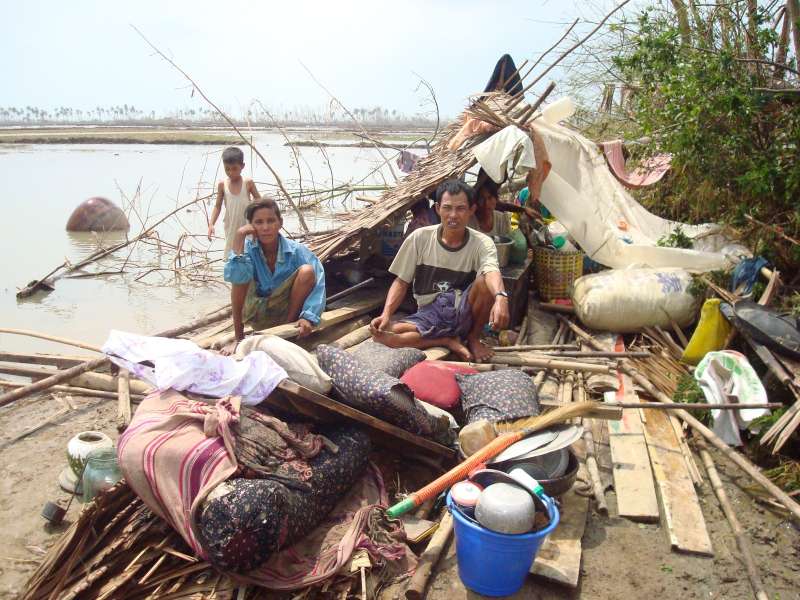 Survivors of 2008’s Cyclone Nargis shelter in the ruins of their destroyed home in War Chaun, a village in Myanmar’s Ayeyarwaddy Division. © UNHCR/Taw Naw Htoo
Survivors of 2008’s Cyclone Nargis shelter in the ruins of their destroyed home in War Chaun, a village in Myanmar’s Ayeyarwaddy Division. © UNHCR/Taw Naw Htoo -
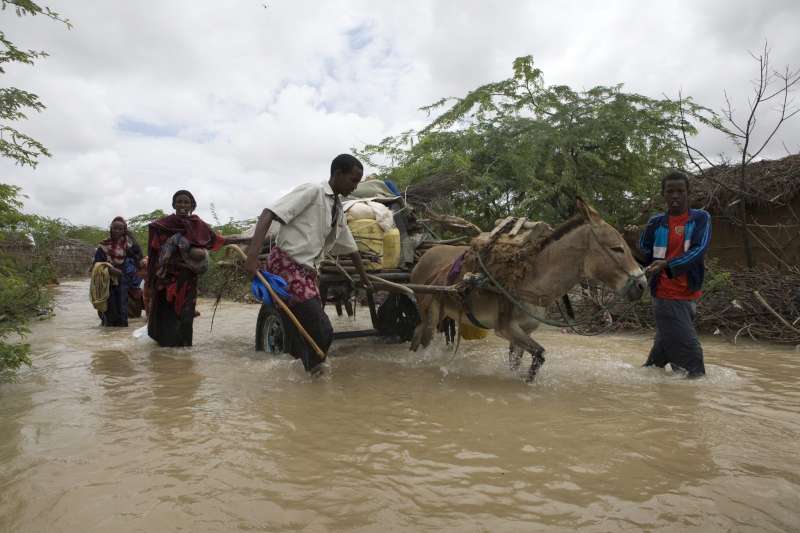 Somali refugees flee flooding in Dadaab, Kenya. The Dadaab refugee camps are situated in areas prone to both drought and flooding, making life for the refugees and delivery of assistance by UNHCR challenging. / UNHCR / B. Bannon © UNHCR/B.Bannon
Somali refugees flee flooding in Dadaab, Kenya. The Dadaab refugee camps are situated in areas prone to both drought and flooding, making life for the refugees and delivery of assistance by UNHCR challenging. / UNHCR / B. Bannon © UNHCR/B.Bannon -
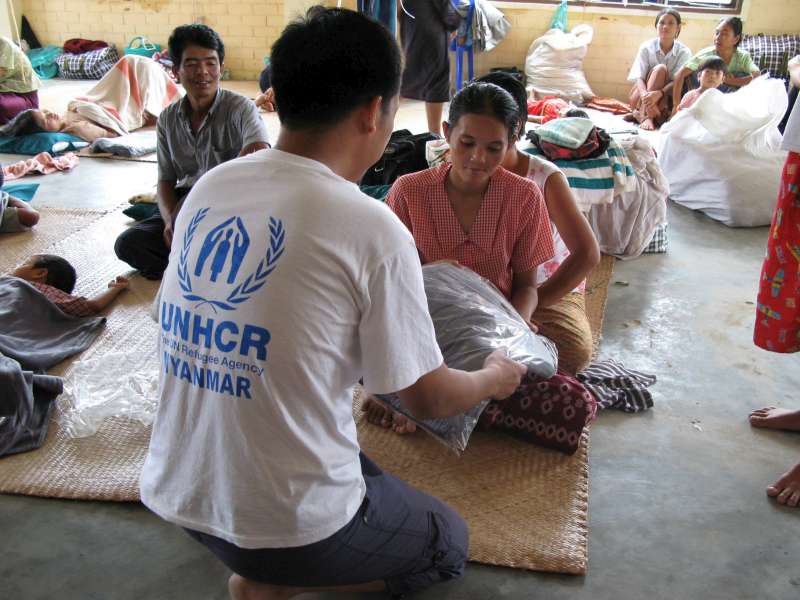 A UNHCR staff member hands out blankets to people displaced by Cyclone Nargis at a temporary shelter in Yangon, Myanmar. © UNHCR/K.Myo
A UNHCR staff member hands out blankets to people displaced by Cyclone Nargis at a temporary shelter in Yangon, Myanmar. © UNHCR/K.Myo -
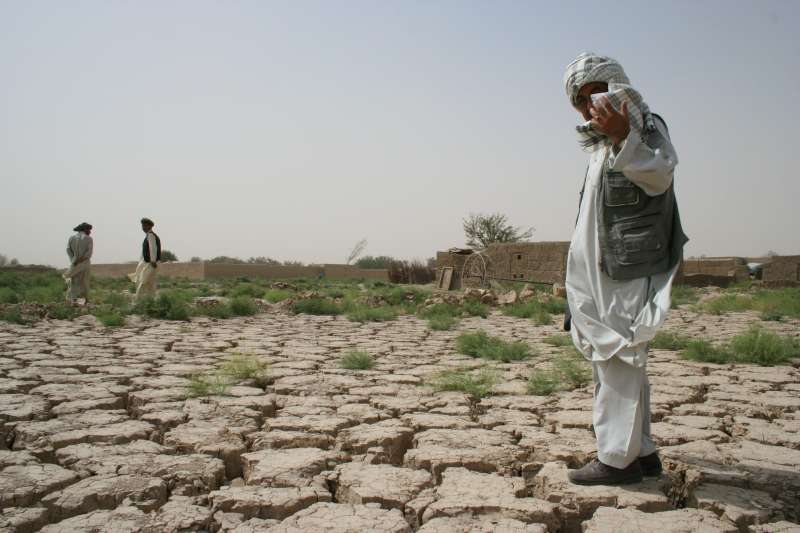 The 2006 drought in Jowzjan province of northern Afghanistan made the land unfarmable. © UNHCR/V.Tan
The 2006 drought in Jowzjan province of northern Afghanistan made the land unfarmable. © UNHCR/V.Tan -
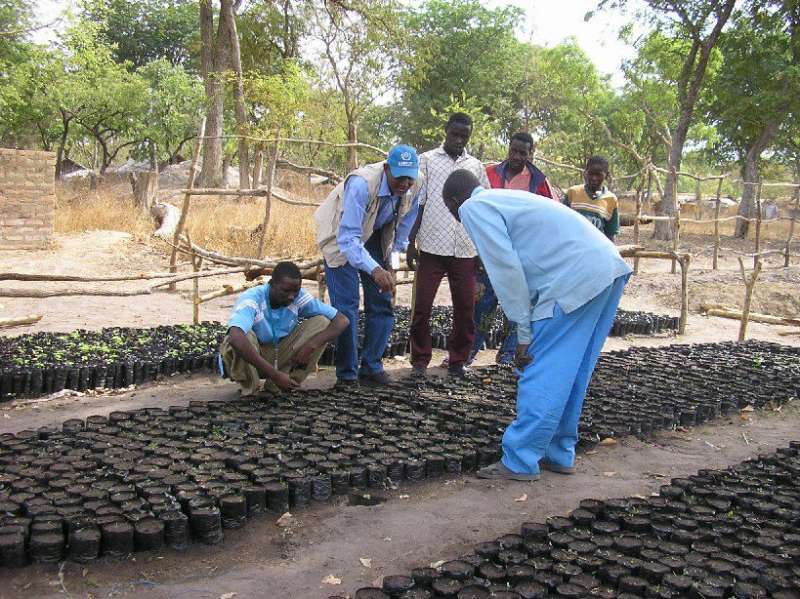 As part of a reforestation programme, a UNHCR environment officer teaches colleagues and refugees about the care of nursery plants in southern Chad’s Amboko refugee camp. © UNHCR/A.Rehrl
As part of a reforestation programme, a UNHCR environment officer teaches colleagues and refugees about the care of nursery plants in southern Chad’s Amboko refugee camp. © UNHCR/A.Rehrl -
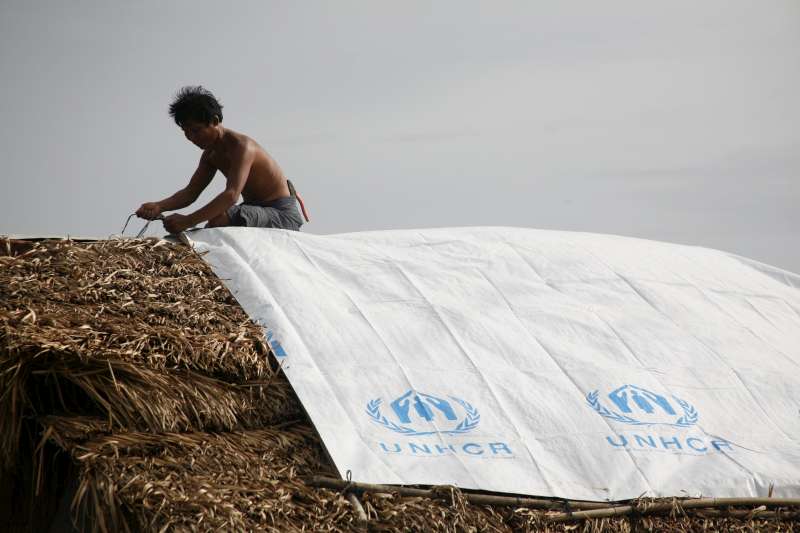 A roof battered by Cyclone Nargis is waterproofed with UNHCR plastic sheeting in Yangon, Myanmar. © UNHCR/S.Kritsanavarin
A roof battered by Cyclone Nargis is waterproofed with UNHCR plastic sheeting in Yangon, Myanmar. © UNHCR/S.Kritsanavarin -
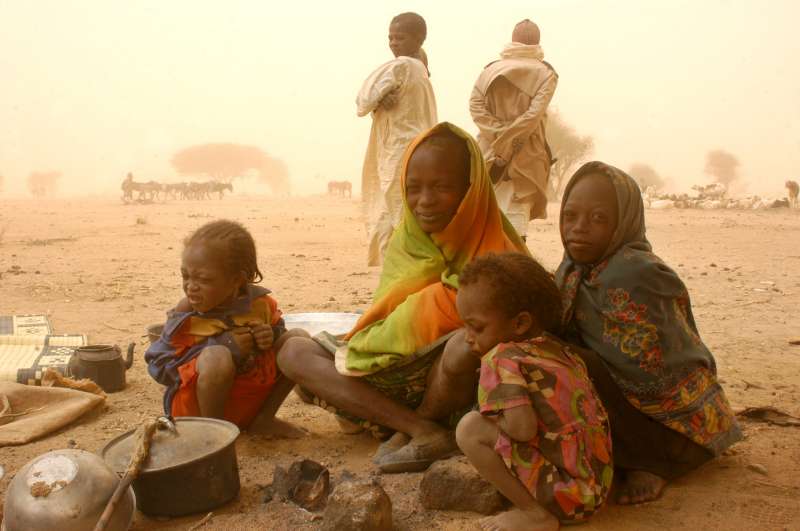 Young, new arrivals from Sudan’s Darfur region endure a sandstorm in the border town of Bamina, eastern Chad. Rainfall in this region has been in decline since 1950. This, coupled with deforestation, has had a devastating effect on the environment. © UNHCR/H.Caux
Young, new arrivals from Sudan’s Darfur region endure a sandstorm in the border town of Bamina, eastern Chad. Rainfall in this region has been in decline since 1950. This, coupled with deforestation, has had a devastating effect on the environment. © UNHCR/H.Caux -
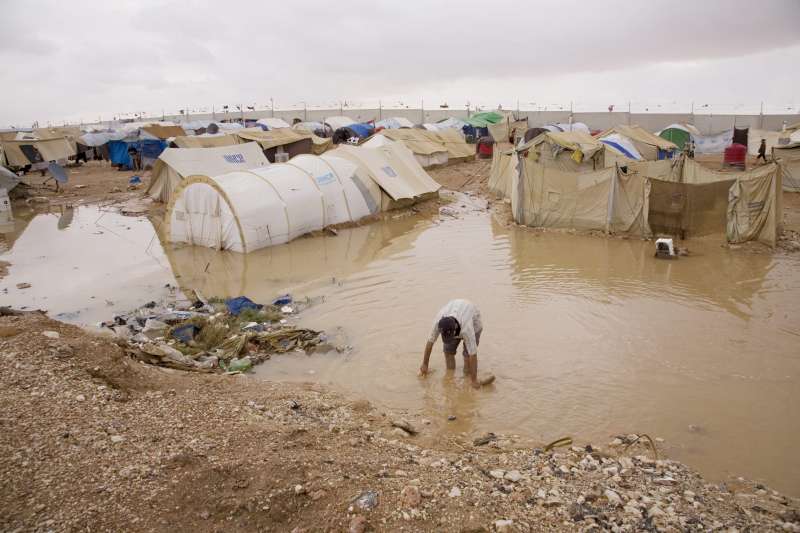 A Palestinian man wades through flood water in search of lost belongings. Severe rainstorms in October 2008 left tents inundated with water and sewage at Al Tanf, a settlement in the narrow no man's land between Iraq and Syria. © UNHCR/B.Auger
A Palestinian man wades through flood water in search of lost belongings. Severe rainstorms in October 2008 left tents inundated with water and sewage at Al Tanf, a settlement in the narrow no man's land between Iraq and Syria. © UNHCR/B.Auger -
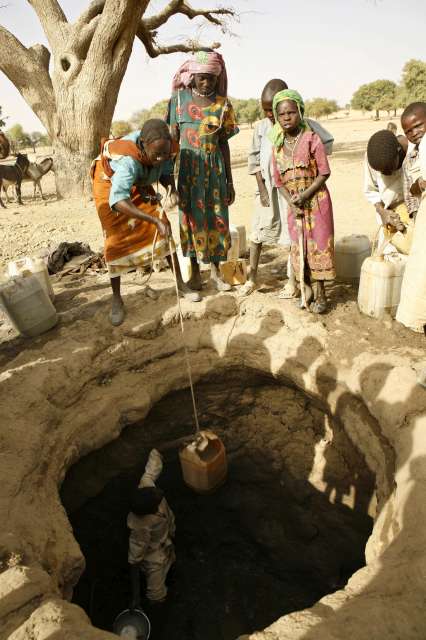 A Sudanese refugee hoists a jerry can of water out of a well in Birak, Chad. The locals generously share their dwindling water supplies with thousands of newly arrived refugees from the Darfur region. © UNHCR/H.Caux
A Sudanese refugee hoists a jerry can of water out of a well in Birak, Chad. The locals generously share their dwindling water supplies with thousands of newly arrived refugees from the Darfur region. © UNHCR/H.Caux -
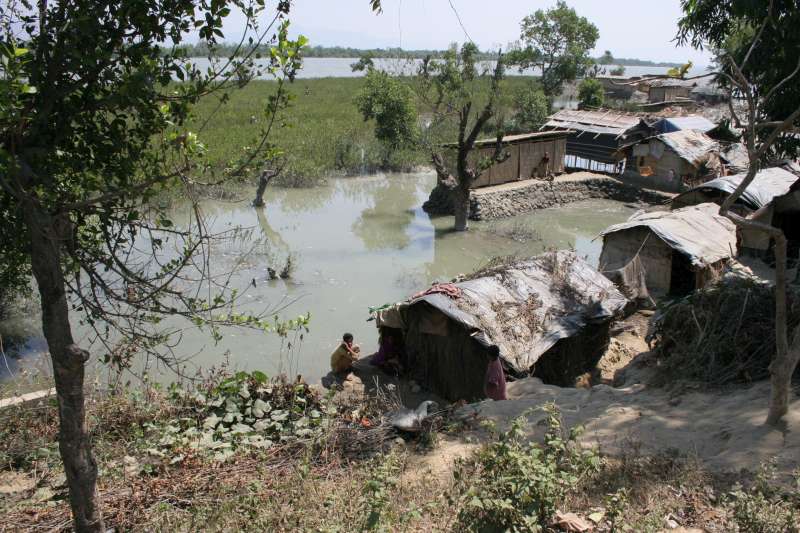 With no place to go, some 6,000 unrecognized Muslim refugees from Myanmar built shelters by the Naf river, south of Cox’s Bazar, in Bangladesh. Conditions were harsh in an area prone to flooding and storms. © UNHCR/K.McKinsey
With no place to go, some 6,000 unrecognized Muslim refugees from Myanmar built shelters by the Naf river, south of Cox’s Bazar, in Bangladesh. Conditions were harsh in an area prone to flooding and storms. © UNHCR/K.McKinsey -
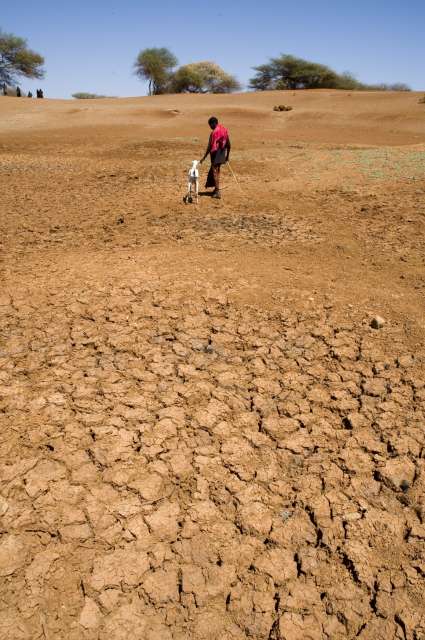 For Somali families that have endured violence and poverty for generations, a crushing blow came when climate change led to the disappearance of pasture for their animals. Their nomadic way of life destroyed, they are forced to settle in towns or cities where they are often reliant on assistance. © B Bannon
For Somali families that have endured violence and poverty for generations, a crushing blow came when climate change led to the disappearance of pasture for their animals. Their nomadic way of life destroyed, they are forced to settle in towns or cities where they are often reliant on assistance. © B Bannon -
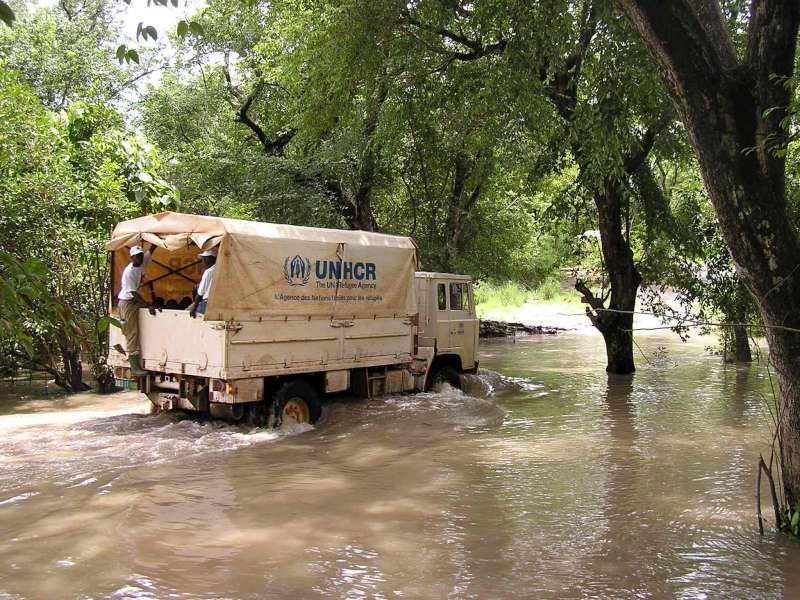 At the Chadian border town of Bettel, a UNHCR truck makes its way through floodwaters to transfer some 10,000 new arrivals from the Central African Republic to the Chad town of Gore. © UNHCR/C.Pryce
At the Chadian border town of Bettel, a UNHCR truck makes its way through floodwaters to transfer some 10,000 new arrivals from the Central African Republic to the Chad town of Gore. © UNHCR/C.Pryce -
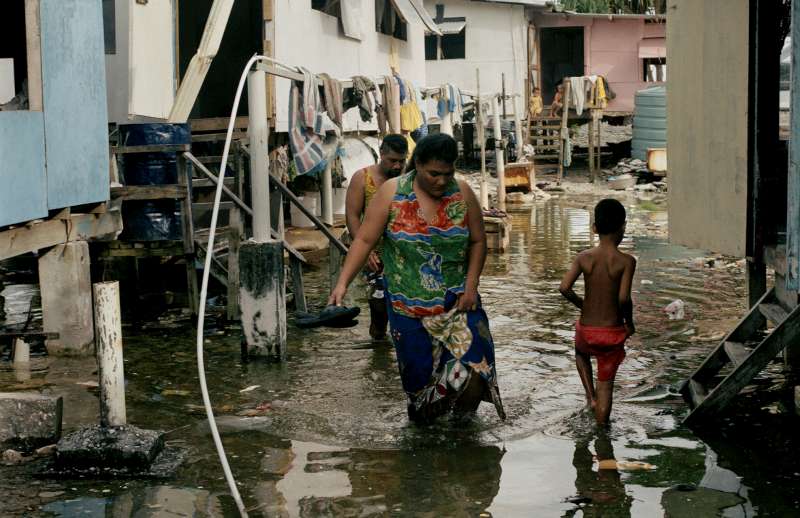 Rising sea levels have caused many inhabitants in the Pacific island nation of Tuvalu to relocate, raising questions about nationality, identity and culture if the population becomes stateless. © Panos/J.Carlin
Rising sea levels have caused many inhabitants in the Pacific island nation of Tuvalu to relocate, raising questions about nationality, identity and culture if the population becomes stateless. © Panos/J.Carlin -
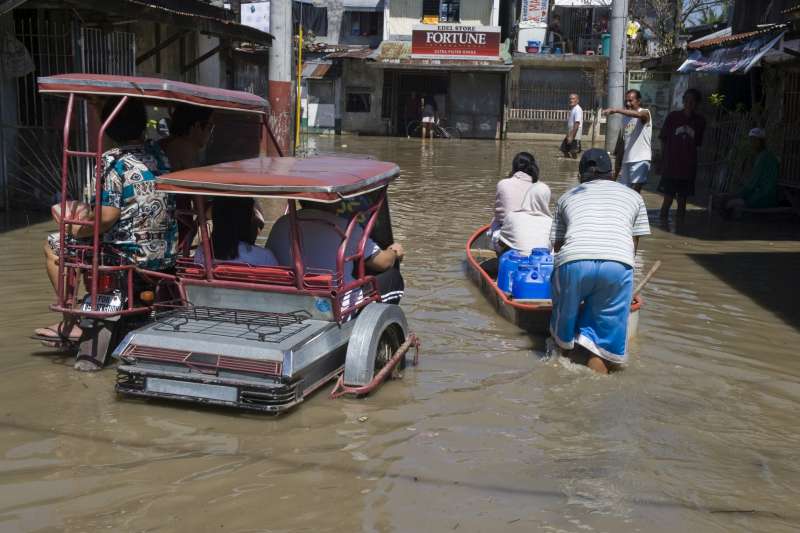 Typhoon Santi left streets in Binan City, 30 kilometres south of Manila, all but impassable in November 2009. UNHCR sent a small emergency team to help the displaced in the Philippines. © Onasia/G.Joren
Typhoon Santi left streets in Binan City, 30 kilometres south of Manila, all but impassable in November 2009. UNHCR sent a small emergency team to help the displaced in the Philippines. © Onasia/G.Joren
Planned relocation and UNFCCC
Climate Change: Protection Challenge
- High Commissioner' Dialogue on Protection Challenges: Understanding and addressing root causes of displacement - Opening Remarks by António Guterres United Nations High Commissioner for Refugees, Geneva, 16 December 2015 16 Dec 2015
- Volker Türk Discussion Forum on Climate Change, Berlin, 2014 17 Jun 2014
- Second preparatory meeting of the 22nd OSCE. Session II: Cross-dimensional Impacts of Natural and Man-Made Disasters, Population movements in the context of natural disasters 27 May 2014
Climate Change and Displacement - external links
- Refword - Documents and Reports
- IMDC - Global Estimates 2014: People displaced by disasters
- UNFCCC - Climate induced displacement, migration and managed relocation rising up the adaptation agenda of the UNFCCC
- UN News Center - Feature: Should international refugee law accommodate climate change?
- International Bar Association - 'Climate refugees'? Addressing the international legal gaps - Benjamin Glahn
- Vulnerable nations urged to craft climate migration policy

